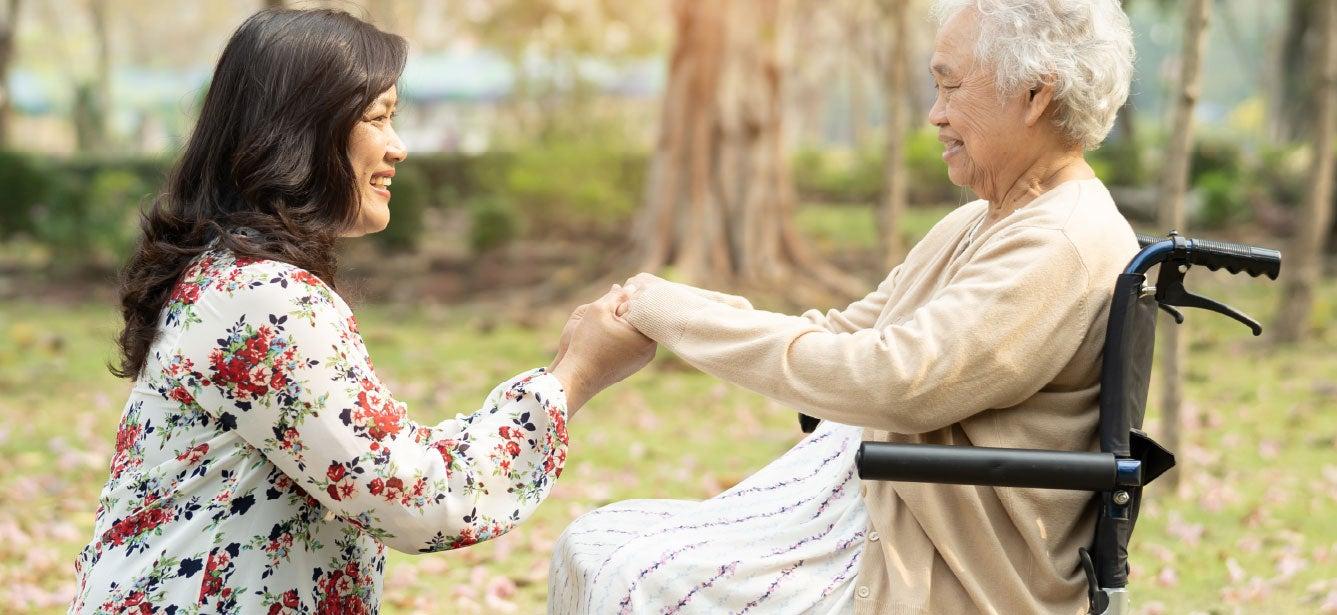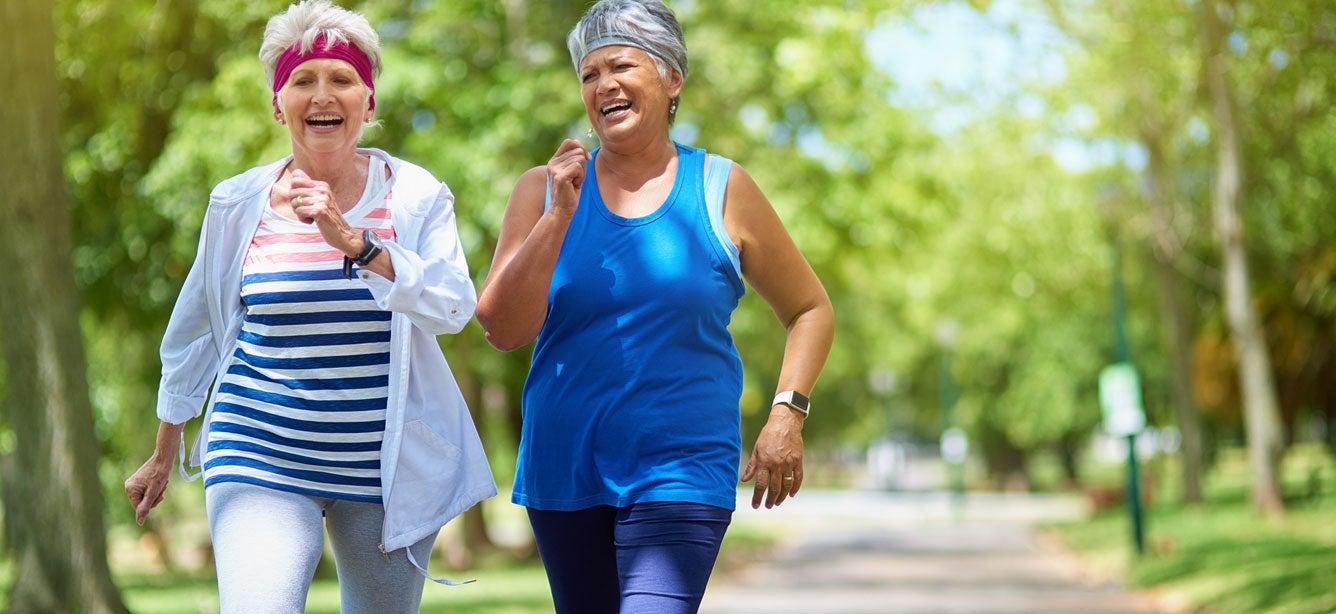Why Older Adults Shouldn’t Ignore an Osteoarthritis Diagnosis
6 min read

Related Topics
Osteoarthritis is a complex disease that affects all tissues of the joint. This includes cartilage (the tissue that covers the ends of bones) the bones themselves, and surrounding tissues like the joint lining, tendons, ligaments, and muscles. Damage to these tissues causes symptoms like pain, swelling, and reduced movement in the joint. OA can occur in any joint, but it is most commonly found in the knees, hips, hands, feet, and spine.
It's possible for anyone to develop osteoarthritis during their lifetime, but those most at risk include:
- Older adults (age 45 and older)
- Women
- People with obesity, cardiovascular disease, or diabetes
- People with jobs that require repetitive motion
- People who have had a joint injury from a fall, sports, or other cause
In the U.S., 3.8 million people over age 65 have osteoarthritis. While symptoms may begin in some people in their 20s, OA develops more frequently starting at age 45 and by age 85, about 40% of adults will have OA in at least one hand.1
Osteoarthritis and mental health
In addition to the common physical symptoms that affect joints, OA can also lead to symptoms that affect mental health. For example, pain can also lead to stress, depression, or anxiety. When people limit daily activities due to joint pain or stiffness—or fear that movement will cause more pain or make OA worse—this can lead to feelings of isolation or loneliness and a loss of independence.
Osteoarthritis, injuries, and falls
Older adults with arthritis have a greater risk of falling due to loss of mobility, loss of strength and balance, joint pain and stiffness, even a fear of falling. Falls are a leading cause of joint injury which, in turn, increases the risk of developing or worsening OA. Evidence-based fall prevention programs help people learn to navigate their home and environment safely. These programs may also include physical activities that improve flexibility, strength, balance, agility, and joint stability to minimize the risk of falling.
Tips for Success: Evidence-based fall prevention programs are a great way to learn how to prevent falls by improving your physical stability, reducing your fear of falling, and understanding the world around you to look out for different hazards. NCOA is a leading source of fall prevention information and classes you can take at home, online, or in your local community.2
How to manage joint pain and other osteoarthritis symptoms
There is no cure for osteoarthritis, but most people can manage the symptoms effectively at home and with help from their doctor.
- Be physically active: Physical activity is one of the most effective ways to manage joint pain and to stay mobile. Being active will NOT make OA worse or damage joints further. In fact, the opposite is true. Even a small amount of physical activity goes a long way toward reducing joint pain and improving overall health.
Tips for success: Remember to Start Low, and Go Slow – beginning with a small amount of activity for a short amount of time will help you get used to being active and will help ensure that you do not overdo it. Set a long-term goal of reaching 150 minutes of physical activity each week. - Eat a healthy diet and maintain a healthy weight: Every person’s joints are impacted by the amount of body weight they carry. While arthritis pain often exists in people who have a healthy body weight, joint pain can be worse in people who have obesity. Consider this: on pound of extra body weight can feel like an extra four pounds of weight on joints. In other words, losing a small amount of weight can result in a noticeable improvement in joint pain.
Tips for Success: Eating a diet of healthy, whole foods (fruits, vegetables, whole grains) while minimizing processed foods is a good way to ensure that you are getting balanced nutrition. Portion control is recommended to ensure that you eat the right amount of food to meet and maintain healthy body weight goals. - Learn about osteoarthritis: Education is a powerful tool for managing health. Learning about OA is great way to understand the disease and why it is important to include physical activity, weight management, and injury prevention practices daily. There are also other ways to manage OA symptoms and limitations.
Tips for Success: Evidence-based interventions like the Chronic Disease Self-Management Program are a great way to learn how to OA in everyday life. Learn more and find a class online or in your local community. - Stay connected: In the digital age, the idea of ‘staying connected’ often refers to contact through social media, checking out websites, taking online classes. These avenues can be very helpful for learning about osteoarthritis and finding support groups, classes to manage OA, or other educational information. This is convenient for people with time constraints, work obligations, or those without access to local classes or transportation to get to local classes. However, ‘staying connected’ can also be as simple as reaching out to friends and family to talk or walk or play with grandchildren, or volunteering in the community.
Tips for Success: Staying connected is vital for emotional well-being, to reduce feelings of depression, isolation, or loneliness. Staying connected often provides purpose and helps you stay accountable to your goals, for example, to stay physically active or to achieve weight loss. - Talk to your doctor: Most of the strategies listed above can be accomplished on your own, in an online class, or an in-person class at work or in a community center. While each of these strategies is effective for managing symptoms, your doctor can help in several ways: 1) prescribing medicines to manage symptoms, 2) provide counseling to start a physical activity program or weight loss journey, and 3) refer to another provider such as a physical therapist or an evidence-based program. Working with your doctor to identify the best combination of treatments is often the most effective solution.
Tips for success: When you visit your doctor, be specific and be involved! Share the top one or two osteoarthritis symptoms that bother you the most, and focus on managing those. Ask questions about adding more physical activity in your life, or seek counseling about weight management. Discuss any medication concerns or side effects, or mental health concerns that you may have.
For more resources on osteoarthritis, visit the OA Action Alliance website.
Sources
1. Arthritis Foundation. 2020. Arthritis by the Numbers. Found on the internet at https://www.arthritis.org/getmedia/73a9f02d-7f91-4084-91c3-0ed0b11c5814/abtn-2020-final.pdf
2. NCOA. 2022. Chronic Conditions and Fall Risk: Cross-Promoting Programs Across the Continuum of Care. Found on the internet at https://ncoa.org/article/chronic-conditions-and-fall-risk-cross-promoting-programs-across-continuum-of-care.



